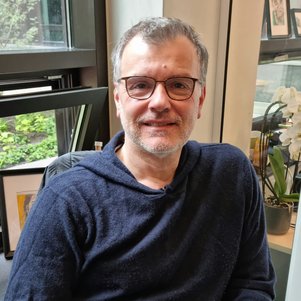Saccharomyces yeasts are notoriously known for having been domesticated by mankind more than seven thousand years ago, for their ability to convert various sources of sugars such as grains, malts, crushed grapes or other plants materials into alcoholic beverages. The carbon dioxide generated during the fermentation process has been used to raise bread dough. Purified Saccharomyces strains are now the basis of modern baking, brewing, fermenting and wine making. Each strain has its own characteristics and they are not interchangeable. Next to these “traditional”applications, Saccharomyces species and more specifically Saccharomyces cerevisiae became one of the most important eukaryotic model organism and one of the main work horse of white biotechnology.
Our research aims at answering fundamental questions derived from industrial problems/limitations and is organized around a wide range of yeast applications in fermentation processes. Our research is sketched around three major themes.
- We are interested to understand the molecular basis of complex industrially relevant traits of domesticated but also wild yeasts. In particular, we focus our attention on brewing related phenotypes, such as flavour and off-flavour formation during wort fermentation, wort sugar assimilation and cold tolerance.
- Rewiring central metabolism to supply optimally building block intermediates for synthesis of added value chemicals. In the recent years, we applied these concepts on two different organisms S. cerevisiae and the filamentous fungi Penicillium chrysogenum for the biosynthesis of plant secondary metabolites of the flavonoid family and b-lactam/cephalosporin antibiotics respectively.
- Both resolving complex traits and central and product metabolisms engineering require access a broad molecular toolbox to effectively achieved the required modifications. We are investigating molecular concepts enabling multiplexing genome editing events as simultaneous gene deletions and/or introduction of multiple gene expression cassettes and point mutations. In the recent years we harnessed the power of CRISPR genome editing tools. Although, the large majority of our research is centered around S. cerevisiae and Saccharomyces pastorianus models, implementation of CRISPR tools opens up genetic accessibility of other industrially relevant yeast species, the so called non-conventional yeasts e.g. Kluyveromyces, Ogataea, Yarrowia species creating a brand new playground for molecular- metabolic engineers.
To reach our goal, we rely on integrated approach combining state of the art modern genetics, (computational) genomics, molecular biology, physiology and biochemistry. These tools support our fundamental and applied research.
- CRISPR/Cas9: a molecular Swiss army knife for multiplexing genetic modifications in Saccharomyces cerevisiae, DOI:http://dx.doi.org/10.1093/femsyr/fov004.
- Circos plot representing structure and chromosome copy number of several lager yeasts. Chromosomal copy number variation in Saccharomyces pastorianus: evidence for extensive genome dynamics in industrial lager brewing strains; doi:10.1128/AEM.02287-15.
- Heat map and identities of the genes that may encode enzymes involved in the Ehrlich pathway. The Ehrlich pathway for fusel alcohol production: a century of research on yeast metabolism; doi:10.1128/AEM.02625-07.
- Calcofluor White staining of an IMS0267 multicellular cluster (S. cerevisiae), doi: 10.1073/pnas.1305949110.
- Oxford Nanopore MinION potable sequencer (JM. Daran).
- Chromosome complement of the S. pastorianus CBS1483; doi:10.1128/AEM.02287-15.
- Lager beer.
- Chemical structure of naringenin.
- Localisation of P. chrysogenum Pc21g17590; dx.doi.org/10.1016/j.ymben.2012.02.004.

Prof. Dr. Ir. Jean-Marc Daran
Full Professor, Section Leader
- +31 15 278 2412
- j.g.daran@tudelft.nl
-
Room number: B58.B0.350
